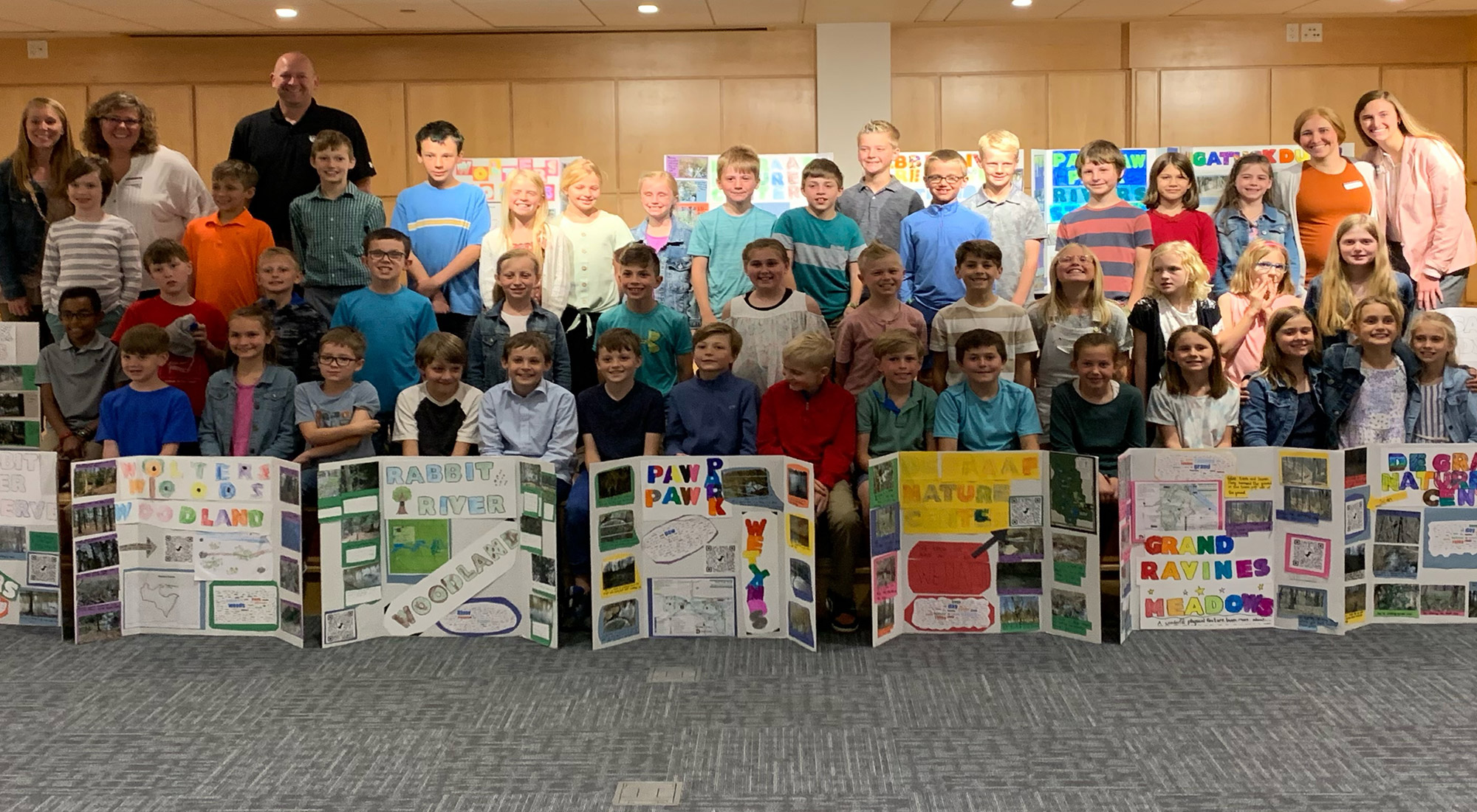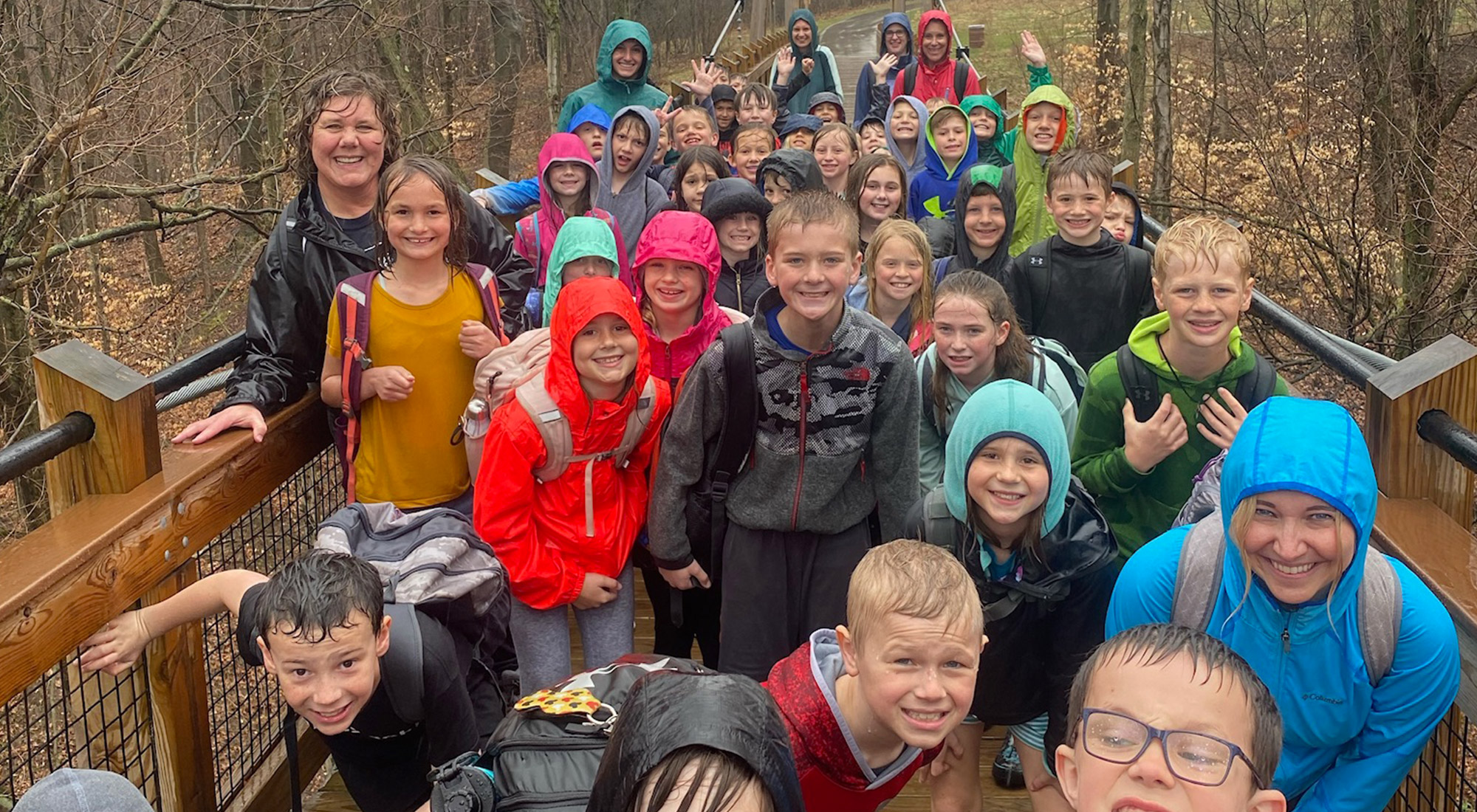Fall 2022 Connections
Here’s some advice before you read this article: If you know a 3rd grader, now 4th grader at Pine Ridge or Forest School, please stop reading this and instead go ask them about their spring geography learning experiences—about what happened when they were asked every Wednesday by their three (amazing) teachers “Can you guess where we’re going today?” You can even ask your 3rd, now 4th grader, about specific local geographic features, like what are riparian buffers. If you live a long way away from them, they can send you links to their online storyboards they made about their spring semester of learning local geography.
But if you live close by, they can take you to a lot of really interesting places right here in the Holland area and point out all the physical features using correct geography terminology. And you won’t get lost, either, because they know how to use a compass and a map, and can even draw you a map of where you are.
The only thing they can’t do is drive you there. Yet.
But if you don’t personally know a 3rd, now 4th grader from Pine Ridge or Forest School, you might want to read on about all the cool local parks they visited this spring, and how much they learned, and how excited they were about all they learned. And then you can scan the code at the end of this article and check out their websites they made, and then go visit a few new places right here under our noses that I bet a lot of us have never visited before. Places with riparian buffers.
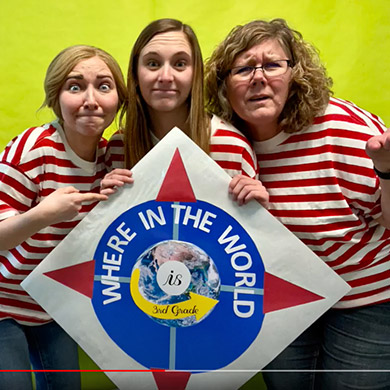
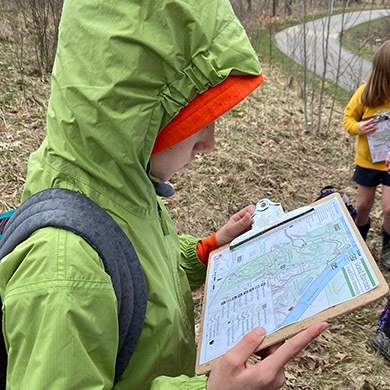
”Sometimes they just endured, and learned how well 57 3rd graders can do while hiking three miles in an April downpour, soaked completely to their skin...
It all started last August when the third grade Forest School students moved into their classroom in the Pine Ridge school building so they could take advantage of the educational extras like art, music, PE, and ESS. And the experienced Pine Ridge teachers, Chris DeZwaan ’88 and Natalie Boer ’11, started collaborating with the brand new Forest School teacher, Erica Slenk ’16, team-teacher style, so that not only she, but all the Forest School 3rd graders would feel included in the whole Pine Ridge community. (Because that’s one of Holland Christian’s “discipleship flags,” you know? Read about “Community-Growing” at hollandchristian. org/academics/faith-development/.) And together Chris and Natalie decided they wanted to improve the state-mandated 3rd grade social studies unit on geography that they weren’t crazy about, and do it a little more Forest School style.
Which means they took it outdoors. But with intentionality. And hours and hours of planning. And a whole lot of experimenting where things didn’t always go as planned. Sometimes things went better, and sometimes they learned how to do something a little (or a lot!) different the next time. And sometimes they just endured, and learned how well 57 3rd graders can do while hiking three miles in an April downpour, soaked completely to their skin, and still learn and stay (mostly) positive. And still rejoice in how good is our God. Because that’s another Holland Christian discipleship flag they learned—“God- Glorifying,” which became one of their teachers’catch phrases as they all discovered multiple delights.
What they were doing is often dubbed “Project Based Learning,” or PBL in educational terms, and they were grateful for the wisdom, encouragement, and expertise of the Outdoor Discovery Center’s (ODC’s) Ted Malefyt who helped them dream, plan, and problem solve, especially the techy stuff like how to teach 3rd graders to make a map through ARCGIS, and then their online story maps/website. But mostly he gave them the freedom to “live in the mess a little bit, week by week” as they explored “what can be ‘sticky’ for kids,” Natalie explained.
The teachers started out with around 18 state-mandated terms for geography features, then had students research a list of local parks in groups of three, with each group member from a different 3rd grade class, so they were all getting to know different kids than their regular classes. And found new friends.
“It was so cool—it was like they had three teachers, and we each had 50 kids,” Erica said. “They had whole new friend groups on the playground. These are kids going through middle school and high school together, and some of these friendships will last into high school.”
Out of the list of 20 Ottawa County parks and places given to them, each student group researched online, then picked their favorite and pitched it to the class and teachers why they should visit that park in particular. Then the classes together decided on 6 or 7 to visit, and their teachers scheduled buses—one per week for the next 7-8 weeks.
Then students learned a few things you wouldn’t necessarily think to tie into 3rd grade geography: How to write good captions. How to take good photographs. How to make a website. How to use a needled compass, read a map. How to draw a map to an estimated scale. How to notice geographical features around you and why they’re important to our ecology. How to conduct an interview, greet someone new, how to ask questions, how to take notes during an interview. Then they learned how to present their findings to real audiences, to convince them (us!) to visit a particular park, and how invaluable it was to our community, and why they should not only visit it, but love it.
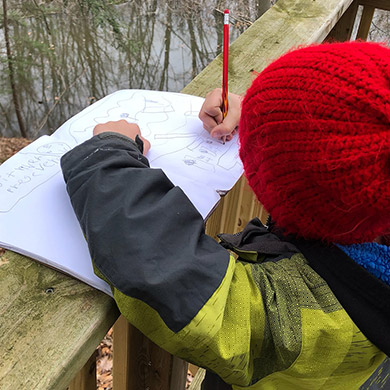
”Because you can only protect what you know and love; our job was to help others know and love what was around them to help protect it.
“Because you can only protect what you know and love,” Chris explained. “Our job was to help others know and love what was around them to help protect it.”
Because that’s another HC discipleship flag they were practicing—“Creation-Keeping.”
Before each weekly visit to a new park the teachers surprised their classes with a creative intro video, with themselves dressed as Where’s Waldo, giving clues so the students could guess where they were adventuring that day. Then they all grabbed their iPads and gear, and headed out to the park for the day.
Each visit followed a similar pattern: Get off the bus, and break up into preassigned groups with a teacher; look at a trail map for that location, find the trailheads, and choose an end location as a group; hike to the end location, taking photos with their iPads of the various unique geographical physical features along the way; also enroute, sketch a map of the trail from a birds eye view, add a key, estimate the distance; hike back; once back in the classroom, pin their locations and finish their maps, adding photos and captions in the app Survey 123.
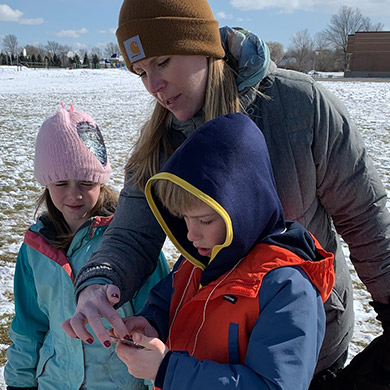

Simple, right? But packed with so much learning: estimation, location, art, math, spatial awareness, communication and collaboration, geography, how to stay warm in the rain, how to blow your nose outside without any Kleenexes…
“They also knew that work came first, and then they could explore,” Chris added. “We learned a lot about doing hard things, together, and listening to each other, having fun despite the circumstances, and we talked a lot about how cool is our God!”
And it made for a much more interesting and memorable way to learn about local geography. Better, but not necessarily easier. Or cheaper. But that’s where Ted recommended grants through GroundSwell and MiSTEM at Grand Valley, to help pay for the extra supplies.
The 3rd graders presented their findings at the Herrick Public Library to parents and grandparents and general passers-by. A select few even presented their findings at the GroundSwell’s Project Showcase at Celebration Cinema, and watched their video on the big screen there, along with some yummy popcorn, all courtesy of GroundSwell that was following their educational growth, connecting them and their teachers with other STEM teachers around the area.
And here’s where you come into their story: Our 3rd, now 4th graders, would love nothing more than to present their findings to you, as well. Because we all learn better if we have a real audience to share with. So if you scan the code at left by holding your phone’s camera in front of the code, you can access their whole website of local parks and the geography features you’ll find at storymaps.arcgis.com/stories/145964dd55c648e38072dce962d2439d—and then put on your hiking shoes! And please stay tuned for what cool learning projects this year’s 3rd graders come up with!
